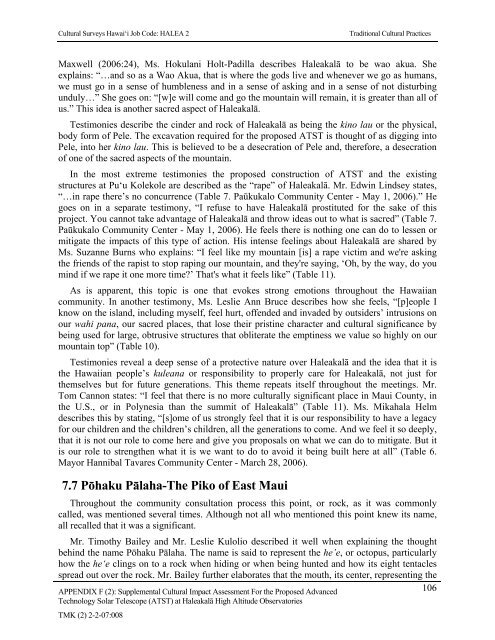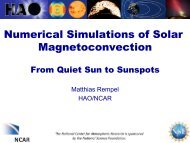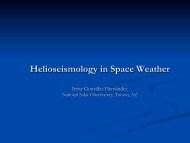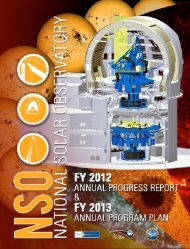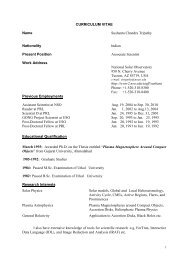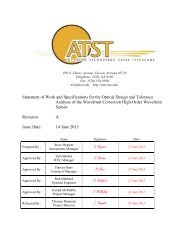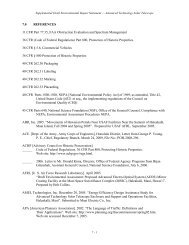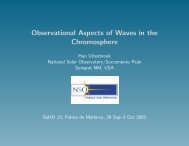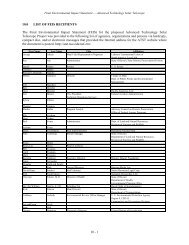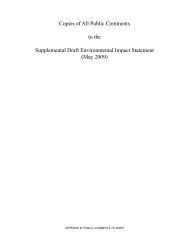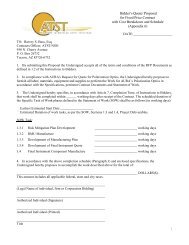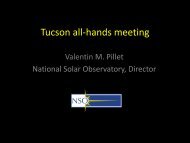F2 - ATST
F2 - ATST
F2 - ATST
You also want an ePaper? Increase the reach of your titles
YUMPU automatically turns print PDFs into web optimized ePapers that Google loves.
Cultural Surveys Hawai‘i Job Code: HALEA 2Traditional Cultural PracticesMaxwell (2006:24), Ms. Hokulani Holt-Padilla describes Haleakalā to be wao akua. Sheexplains: “…and so as a Wao Akua, that is where the gods live and whenever we go as humans,we must go in a sense of humbleness and in a sense of asking and in a sense of not disturbingunduly…” She goes on: “[w]e will come and go the mountain will remain, it is greater than all ofus.” This idea is another sacred aspect of Haleakalā.Testimonies describe the cinder and rock of Haleakalā as being the kino lau or the physical,body form of Pele. The excavation required for the proposed <strong>ATST</strong> is thought of as digging intoPele, into her kino lau. This is believed to be a desecration of Pele and, therefore, a desecrationof one of the sacred aspects of the mountain.In the most extreme testimonies the proposed construction of <strong>ATST</strong> and the existingstructures at Pu‘u Kolekole are described as the “rape” of Haleakalā. Mr. Edwin Lindsey states,“…in rape there’s no concurrence (Table 7. Paūkukalo Community Center - May 1, 2006).” Hegoes on in a separate testimony, “I refuse to have Haleakalā prostituted for the sake of thisproject. You cannot take advantage of Haleakalā and throw ideas out to what is sacred” (Table 7.Paūkukalo Community Center - May 1, 2006). He feels there is nothing one can do to lessen ormitigate the impacts of this type of action. His intense feelings about Haleakalā are shared byMs. Suzanne Burns who explains: “I feel like my mountain [is] a rape victim and we're askingthe friends of the rapist to stop raping our mountain, and they're saying, ‘Oh, by the way, do youmind if we rape it one more time?’ That's what it feels like” (Table 11).As is apparent, this topic is one that evokes strong emotions throughout the Hawaiiancommunity. In another testimony, Ms. Leslie Ann Bruce describes how she feels, “[p]eople Iknow on the island, including myself, feel hurt, offended and invaded by outsiders’ intrusions onour wahi pana, our sacred places, that lose their pristine character and cultural significance bybeing used for large, obtrusive structures that obliterate the emptiness we value so highly on ourmountain top” (Table 10).Testimonies reveal a deep sense of a protective nature over Haleakalā and the idea that it isthe Hawaiian people’s kuleana or responsibility to properly care for Haleakalā, not just forthemselves but for future generations. This theme repeats itself throughout the meetings. Mr.Tom Cannon states: “I feel that there is no more culturally significant place in Maui County, inthe U.S., or in Polynesia than the summit of Haleakalā” (Table 11). Ms. Mikahala Helmdescribes this by stating, “[s]ome of us strongly feel that it is our responsibility to have a legacyfor our children and the children’s children, all the generations to come. And we feel it so deeply,that it is not our role to come here and give you proposals on what we can do to mitigate. But itis our role to strengthen what it is we want to do to avoid it being built here at all” (Table 6.Mayor Hannibal Tavares Community Center - March 28, 2006).7.7 Pōhaku Pālaha-The Piko of East MauiThroughout the community consultation process this point, or rock, as it was commonlycalled, was mentioned several times. Although not all who mentioned this point knew its name,all recalled that it was a significant.Mr. Timothy Bailey and Mr. Leslie Kulolio described it well when explaining the thoughtbehind the name Pōhaku Pālaha. The name is said to represent the he’e, or octopus, particularlyhow the he‘e clings on to a rock when hiding or when being hunted and how its eight tentaclesspread out over the rock. Mr. Bailey further elaborates that the mouth, its center, representing theAPPENDIX F (2): Supplemental Cultural Impact Assessment For the Proposed AdvancedTechnology Solar Telescope (<strong>ATST</strong>) at Haleakalā High Altitude ObservatoriesTMK (2) 2-2-07:008106


